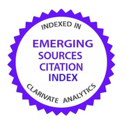Big-data analytics in insurance
DOI:
https://doi.org/10.26360/2017_1Keywords:
Big data, insurance, modelling, data analytics, lines of business, ROC curveAbstract
The big-data revolution has impacted the insurance industry more than expected, to become a paradigmatic example of what the new digital economy is. The large amount of data and predictive modeling in insurance represents a turning point and a golden opportunity to channel the theory of risk to the prediction of losses. The changes are radical and demand deep transformations at the organizational level. In this paper we present some reflections on what the incorporation of Analytics implies in an insurance company and we show its inherent complexity through a case of success.
Downloads
References
Bolancé, C., Guillen, M. y A. E. Padilla-Barreto (2016). Predicting detection in non-life motor and home insurance. Lectures on Modeling and Simulation 2, 107-120.
Boser, B. E., Guyon, I. M. y V. N. Vapnik (1992). A training algorithm for optimal margin classifiers. Proceedings of the fifth annual workshop on Computational Learning Theory, 144-152.
Dobbin, K. K. y R. M. Simon (2011). Optimally splitting cases for training and testing high dimensional classifiers. BMC Medical Genomics 4, 31, 1-8.
Guelman, L., Guillen, M. y A. M. Pérez-Marín (2014). A survey of personalized treatment models for pricing strategies in insurance. Insurance: Mathematics and Economics, 58, 68-76.
Guillen, M. (2016). Big data en seguros. Índice: revista de estadística y sociedad 67, 28-30.
Harrington, E. (2014). Building an analytics team for your organization part I. http://iianalytics.com/research/building-an-analytics-team-for-your-organization-part-i (7 de julio de 2017).
Hastie, T. (1998). Neural network. En Encyclopedia of Biostatistics, P. Armitage y T. Colton (eds.), John Wiley & Sons, Ltd, New York, 2986-2989.
Hornik, K., Meyer, D. y A. Karatzoglou (2006). Support vector machines in R. Journal of Statistical Software 15(9), 1-28.
Hothorn, T., Hornik, K. y A. Zeileis (2006). Unbiased recursive partitioning: A conditional inference framework. Journal of Computational and Graphical Statistics 15(3), 651-674.
Livingstone, D. J., Manallack, D. T. y I. V. Tetko (1997). Data modelling with neural networks: advantages and limitations. Journal of computer- aided molecular design 11(2), 135-142.
Myatt, G. J. (2007). Making sense of data: a practical guide to exploratory data analysis and data mining. John Wiley & Sons. New York.
McAfee, A. y E. Brynjolfsson (2012). Big data: the management revolution. Harvard Business Review 90(10), 60-68.
McCullagh, P. y J. A. Nelder (1989). Generalized linear models, 37. CRC press.
Meyer, D. y F. T. Wien (2001). Support vector machines. R News 1(3), 23-26.
Meyer, D., Dimitriadou, E., Hornik, L., Weingessel, A., Leisch, F. y C. C. Chang (2012). Package e1071: Misc functions of the department of statistics (e1071), TU Wien. R package version, 1-6.
Russom, P. (2011). Big data analytics. TDWI Best practices report, Fourth quarter 19, 40.
Suykens, J. A. y J. Vandewalle (1999). Least squares support vector machine classifiers. Neural Processing Letters 9(3), 293-300.
Swedloff, R. (2014). Risk classification's big data (r) evolution. Connecticut Insurance Law Journal 21, 339-374.
Tu, J. V. (1996). Advantages and disadvantages of using artificial neural networks versus logistic regression for predicting medical outcomes. Journal of clinical epidemiology 49(11), 1225-1231.
Downloads
Published
How to Cite
Issue
Section
License
Copyright (c) 2023 Alemar E. Padilla-Barreto, Montserrat Guillen, Catalina Bolancé

This work is licensed under a Creative Commons Attribution-NonCommercial-NoDerivatives 4.0 International License.


















